
Above: Copenhagen is quite famous for its canals - the city is built upon a number of islands, much like Stockholm.
Denmark is the southernmost of the Nordic countries, located southwest of Sweden and south of Norway, and bordered to the south by Germany. The country consists of a large peninsula, Jutland and many islands along with two additional overseas constituent countries; the Faroe Islands in the North Atlantic and Greenland in North America.

Above: Amalienborg Palace, the official residence of the Queen and her family.
Denmark became a member of the European Union in 1973 but remains outside the Eurozone, while both Greenland and the Faroe Islands have exercised their right to remain outside the EU entirely.
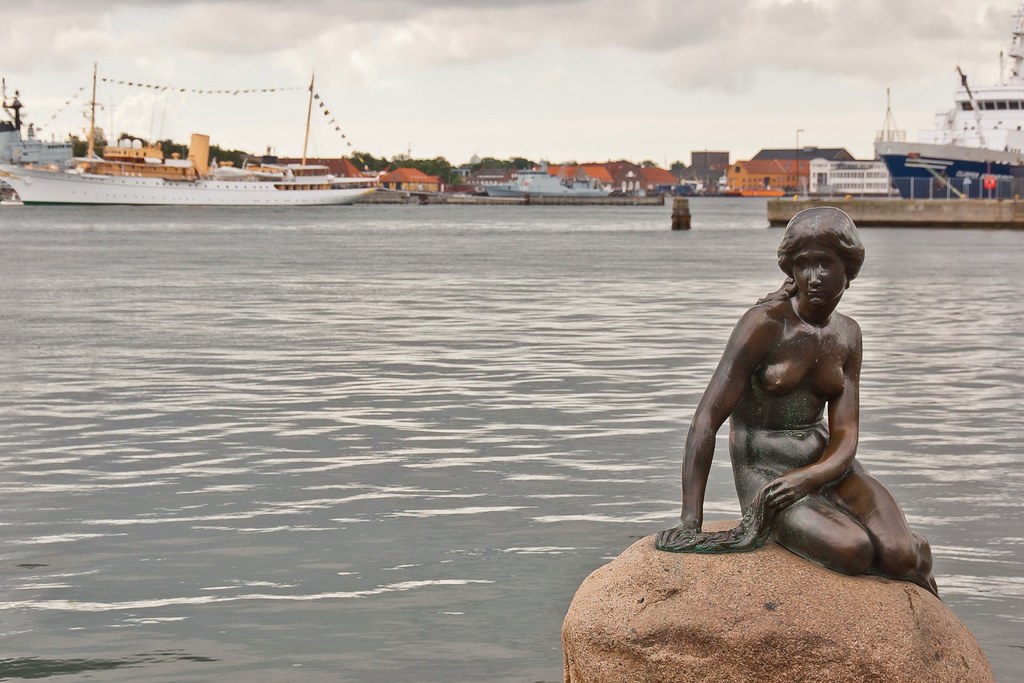
Above: The statue of the Little Mermaid, an icon of the city and a popular tourist attraction. The author of the tale, Hans Christian Andersen, lived in Copenhagen.
Denmark's history has been particularly influenced by its geographical location between the North and Baltic seas. This meant that it was between Sweden and Germany and thus at the centre of the mutual struggle for control of the Baltic Sea; before the digging of the Kiel Canal, water passage to the Baltic Sea was possible only through the three channels known as the Danish straits.
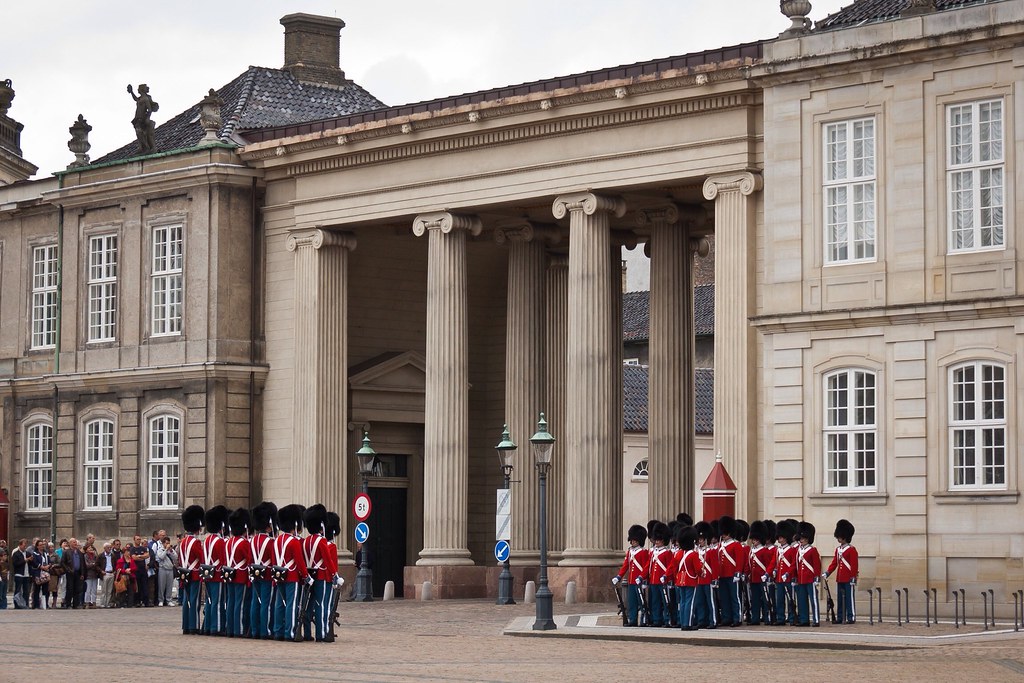
Above: Changing of the Guard at Amalienborg Palace, the official residence of the Queen and her family.
First documented in the 11th century, Copenhagen became the capital of Denmark in the beginning of the 15th century. During the 17th century, under the reign of Christian IV, it became a significant regional centre. Today the city is recognised as one of the cities with the best quality of life. It is also considered one of the world's most environmentally friendly cities. The water in the inner harbour is clean and safe for swimming. 36% of all citizens commute to work by bicycle.
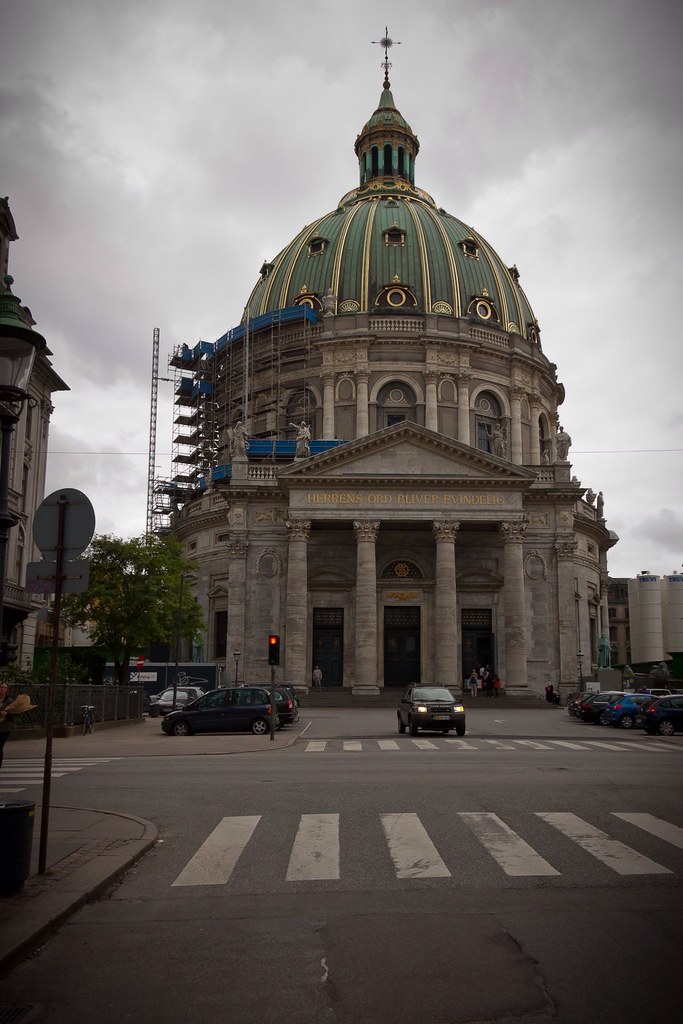
Above: Frederik's Church (The Marble Church) which dominates the distinctive district of Frederiksstaden.
The most distinctive district of Copenhagen is Frederiksstaden developed during the reign of Frederick V. It has Amalienborg Palace at its centre and is dominated by the dome of Frederik's Church (The Marble Church) and several elegant 18th century mansions. The old inner city of Copenhagen includes the small island of Slotsholmen with Christiansborg Palace and Christianshavn.
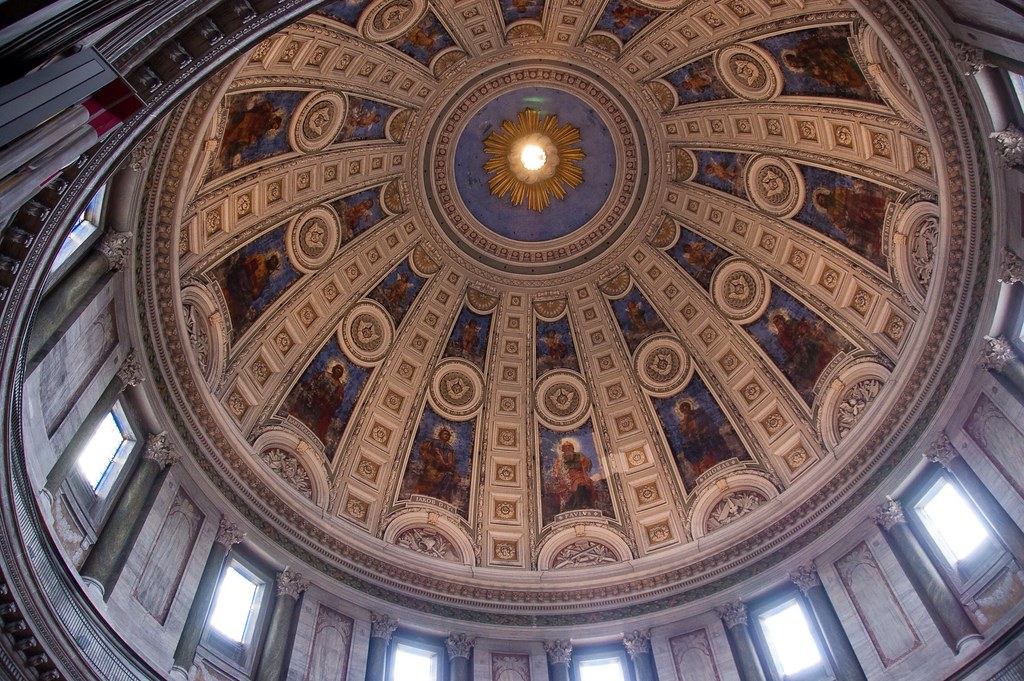
Above: The dome of Frederik's Church.
Sometimes referred to as "the City of Spires", Copenhagen is known for its church and castle spires. Most characteristic is the baroque spire of Church of Our Saviour with its spiralling and narrowing external stairs that visitors can climb to the very top of the spire.
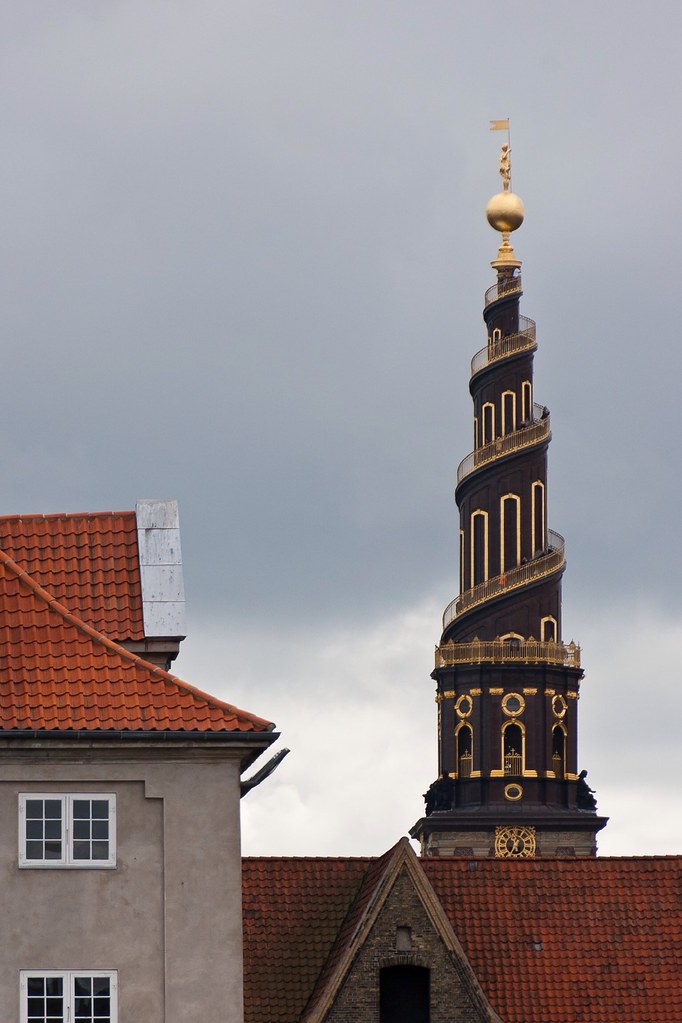
Above: The Church of Our Saviour's baroque spire.
Other important spires are those of Christiansborg Palace, the City Hall and the former Church of St. Nikolaj as well as the renaissance spires of Rosenborg Castle and the 'dragon spire' of Christian IV's former stock exchange, so named because it resembles the tails of four dragons twined together.
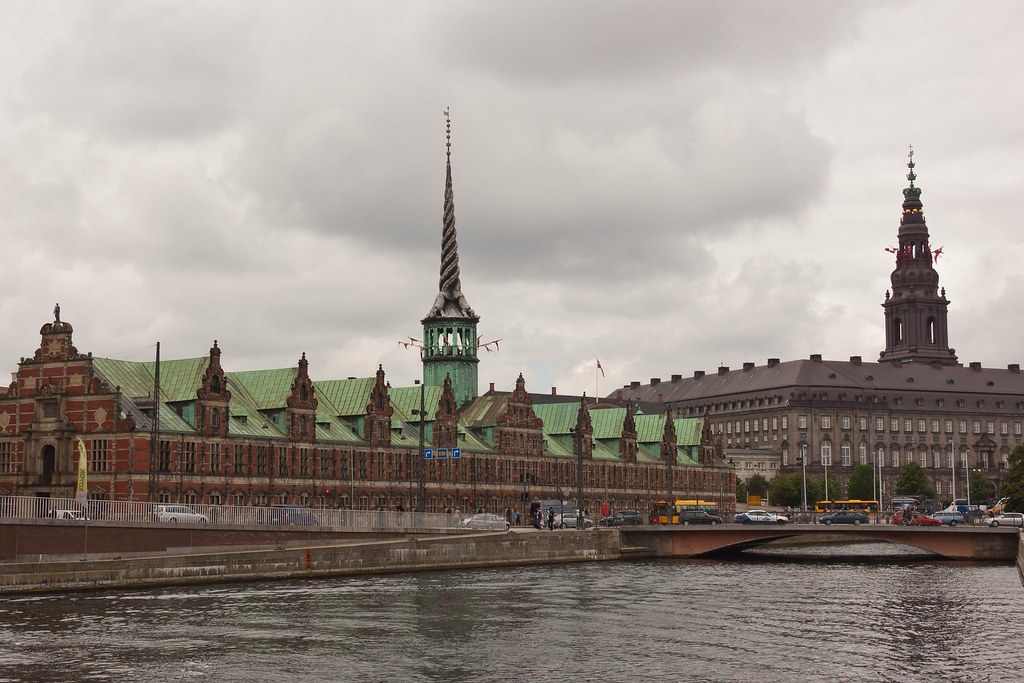
Above: The 'dragon spire' of Christian IV's former stock exchange (left).
During my second visit to Copenhagen, I visited Tivoli Gardens, a famous amusement park and pleasure garden in the heart of the city. The park opened on August 15, 1843 and is the second oldest amusement park in the world, after Dyrehavsbakken in nearby Klampenborg.
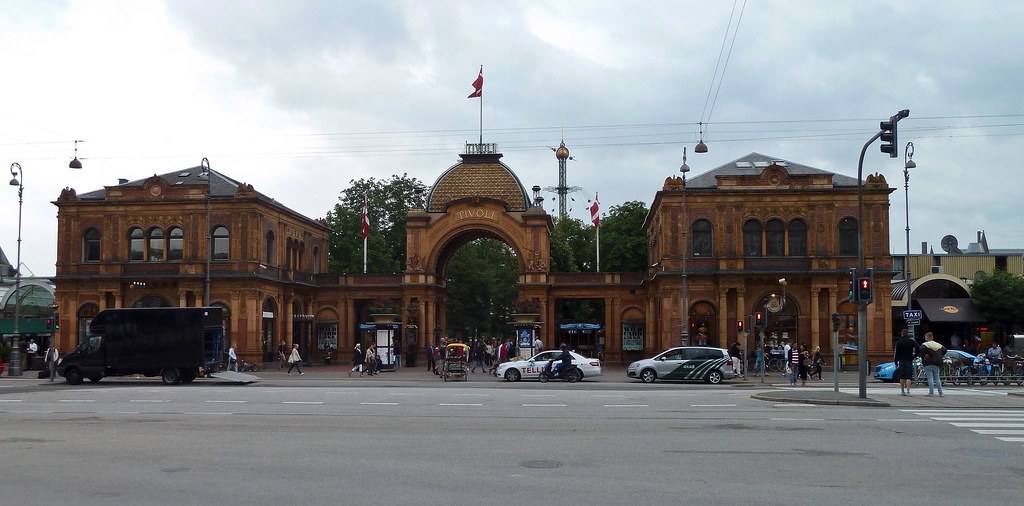
Above: The entrance to Tivoli Gardens.
From the very start, Tivoli included a variety of attractions: buildings in the exotic style of an imaginary Orient: a theatre, band stands, restaurants and cafés, flower gardens, and mechanical amusement rides such as a merry-go-round and a primitive scenic railway. After dark, coloured lamps illuminated the gardens. On certain evenings, specially designed fireworks could be seen reflected in Tivoli's lake.
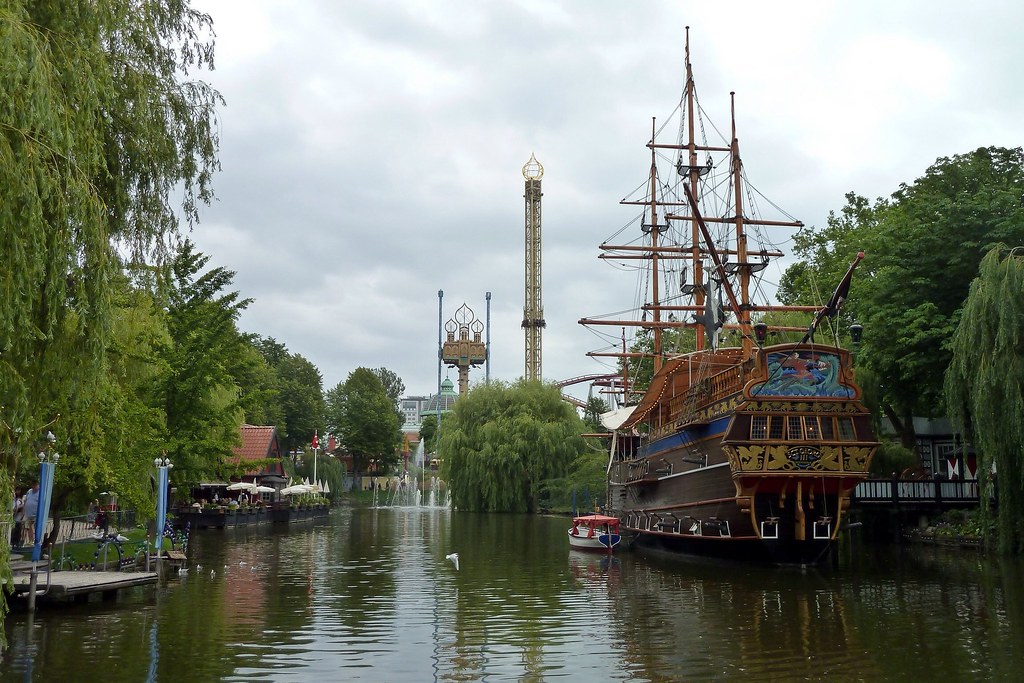
Above: Tivoli's famous pirate ship.
Tivoli is always evolving without abandoning its original charm or traditions. As Georg Carstensen said in 1844, "Tivoli will never, so to speak, be finished," a sentiment echoed just over a century later when Walt Disney said of his own Tivoli-inspired theme park, "Disneyland will never be finished as long as there is imagination left in the world." Walt Disney during a trip overseas with his wife Lilly visited Tivoli Gardens. Walt was so impressed with the Danish amusement park, he immediately decided Disneyland should try to emulate its "happy and unbuttoned air of relaxed fun."

Above: Many buildings are built in the exotic style of an imaginary Orient. This one houses a five star restaurant.
The park is best known for its wooden roller coaster, Rutschebanen, built in 1914 in Malmö, Sweden and moved to Tivoli Gardens in 1915. It is one of world's oldest wooden roller coasters that is still operating today. An operator controls the ride by braking down the hills so it won't gain too much speed.
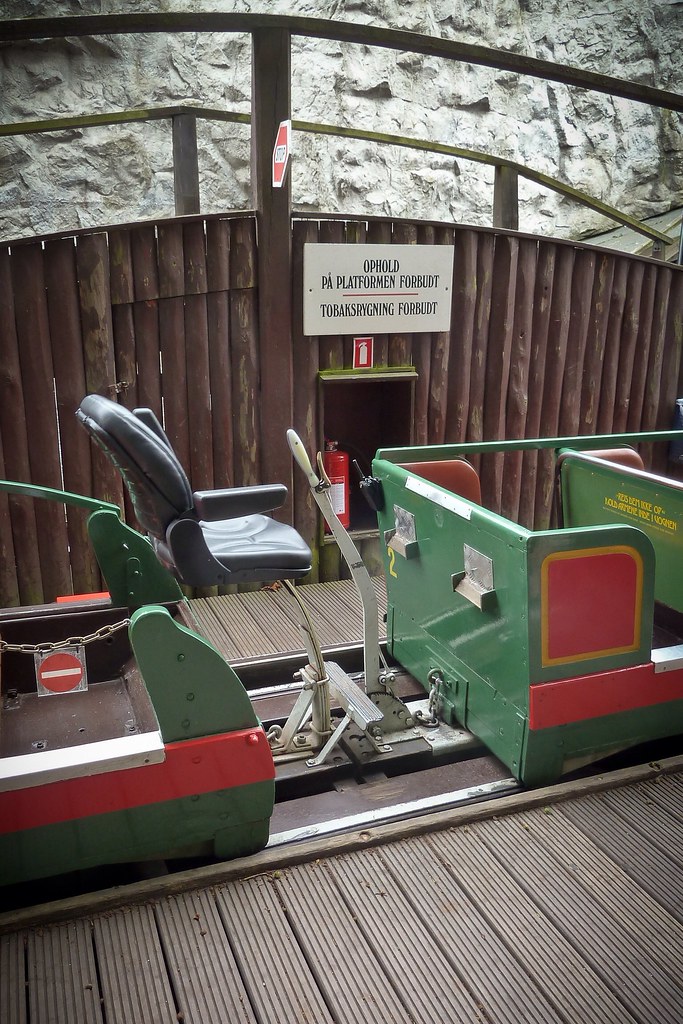
Above: The brake lever on Rutschebanen, the famous wooden coaster!
Besides the rides, Tivoli Gardens also serve as a venue for various performing arts and as an active part of the cultural scene in Copenhagen. With 3.963 million visitors in 2011, Tivoli is the second most popular seasonal theme park in the world and the fourth most visited in Europe, only behind Disneyland Paris , Europa-Park Rust and the Efteling.
Thanks for reading!

No comments:
Post a Comment